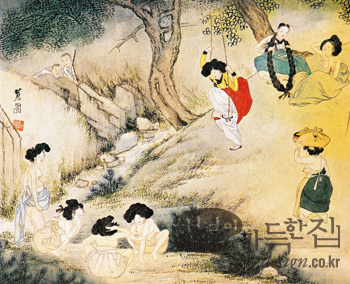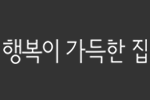 Historically Korea was an agricultural society where people valued sesipungsok a collection of Korean folk customs that are repeated in accordance with the cycle of the seasons. One year is divided into 24 jeolgi(the subdivisions of the seasons) or 24 solar terms. The most representative sesi includes Seol-nal(New Year’s Day) in January, Jeongwol daeboreum(the first full moon of the New Year) in February, Samwol samjit-nal(the third day of the third lunar month) in March, Seokga tansin-il or Chopa-il(Buddha’s birthday) in April, and Dano(5th day of the 5th lunar month) in May.
Historically Korea was an agricultural society where people valued sesipungsok a collection of Korean folk customs that are repeated in accordance with the cycle of the seasons. One year is divided into 24 jeolgi(the subdivisions of the seasons) or 24 solar terms. The most representative sesi includes Seol-nal(New Year’s Day) in January, Jeongwol daeboreum(the first full moon of the New Year) in February, Samwol samjit-nal(the third day of the third lunar month) in March, Seokga tansin-il or Chopa-il(Buddha’s birthday) in April, and Dano(5th day of the 5th lunar month) in May. During the 5th month of the lunar calendar, the month of Dano, ceremonial rituals in hopes to prevent upcoming summer’s diseases and disasters were held. Therefore, traditional customs to prevent various misfortunes have been passed down. Following superstitious customs of Dano for preventing evil spirits and misfortunes, women wash their hair in water infused with changpo(iris), while men put the changpo(iris) roots onto the waist of their pants.
“Gangneung Dano-je”(je means festival) is most notable Dano celebration. The folk festival includes religious ritual called Dano-gut as well as traditional activities for both women and men; women enjoyed swing while men participated in ssireum(Korean wrestling).
Dano’s traditional food is quite appetizing as well as nutritious and ensures good state of health during summertime. People drank tea made of ssuk(mugwort leaves) as well as tteok made up of ssuk. Moreover, traditional food such as jehotang, a mixture of maesil(Japanese apricot) with honey, and jeungpyeon(tteok made from rice wine) made with fermented makgeolli (rice wine) were eaten.
Dano is celebrated in China and Japan as well. The origin of Dano goes back to ancient China during the days of King Hwe and the Cho Dynasty. In Japan, changpo was used to dismiss evil spirit while in China ssuk(mugwort leaves) was used instead.
농경 사회였던 한국에는 예로부터 전해지는 세시풍속 歲時風俗이 있다. 1년을 24개의 절기로 구분 지어 각 가정이나 마을에서 혹은 민족 모두가 따르는 행사이다. 농사력(농사일을 기준으로 만든 달력)을 기준으로 사람들 사이에서 자연적으로 발생해 전승되어온 것으로 오늘날에는 더 이상 행해지지 않는 세시풍속도 있다. 대표적인 세시로는 1월의 설날, 2월의 정월대보름, 3월에는 화전놀이를 하던 삼짇날(음력 3월 3일), 4월에는 석가모니의 탄생을 기념하는 초파일, 그리고 5월의 절기로는 단오가 있다.
음력으로 5월 5일인 단오에는 다가올 여름의 질병과 재앙을 막기 위한 의례적인 행위가 있었다. 여성들이 창포를 삶은 물에 머리를 감고, 붉고 푸른 새 옷에 창포 뿌리를 깎아 붉게 물들인 비녀를 꽂아 몸단장을 했다. 남자들은 창포 뿌리를 허리춤에 차고 다니며 액을 물리쳤다. 사람들은 더위에 대비해 부채를 선물했다. 지금은 사라졌지만 과거에는 이와 같은 행위를 통해 일종의 의식을 치렀다. 지방에 따라 단오굿이 행해졌는데, 그중 가장 유명한 것이 ‘강릉 단오제’이다. 이때는 그네를 타고 씨름을 하며 단오를 즐겼고 바깥 출입이 드물었던 시절 부녀자들은 모처럼 성장을 하고 나들이를 갈 수 있는 날이었다. 단옷날 아침에는 쑥을 달여 마시고 떡을 만들어 먹었다. 이 외에도 꿀과 청매실 그을린 것에 여러 한약재를 섞어 만든 제호탕과 막걸리를 발효시켜 만들어 술떡이라고도 불리는 증편과 같은 전통 음식을 먹었다. 단오는 비단 한국에만 있었던 것은 아니다. 중국과 일본에도 단오가 있었는데, 일본에서는 한국과 마찬가지로 창포를 이용해 나쁜 기운(액 厄)을 막았고 중국에서는 창포 대신 쑥을 이용했다.
(왼쪽) 신윤복의 ‘단오풍정’







